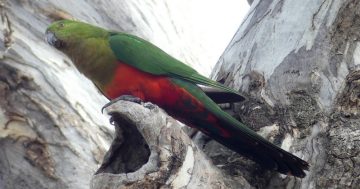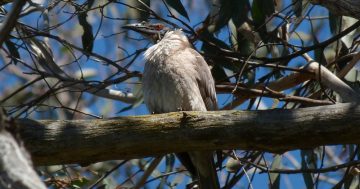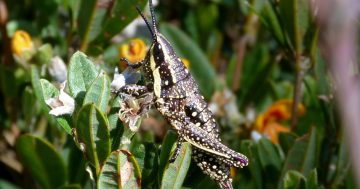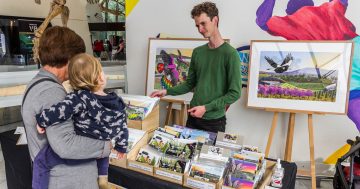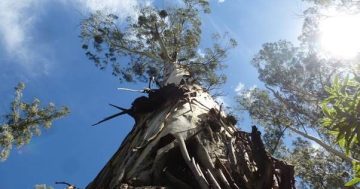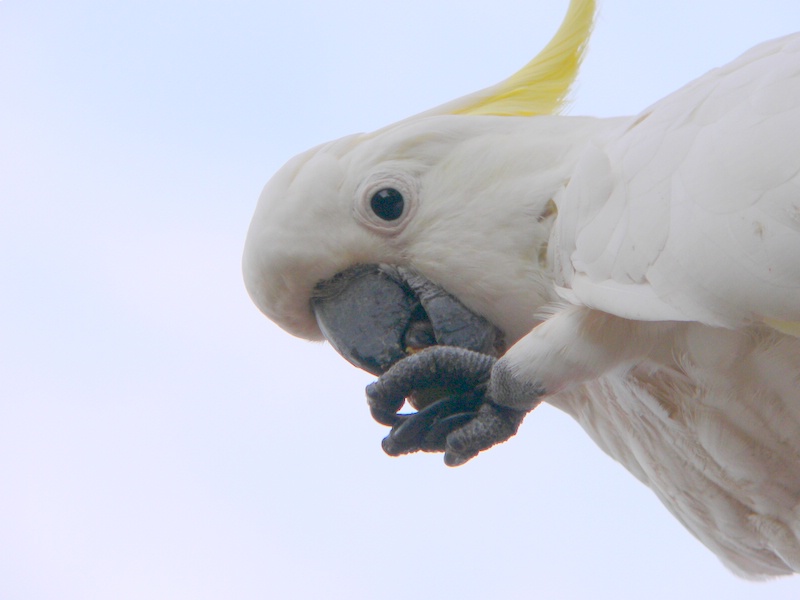
Nearly all Sulphur-crested Cockatoos are left-handed. Photo: Ian Fraser.
This is the 60th natural history column I’ve written for these pages, and I can’t believe that the screeching in-your-face flocks of yellow-crested larrikins we know as Sulphur-crested (or just White) Cockatoos haven’t yet demanded their turn here. This is a good time to feature them, though.
While they can be seen (and heard!) in Canberra all year round, it is in winter that they come into town from the surrounding woodland remnants and the mountain forests where they’ve bred in old hollow eucalypts.
They do so for the food our suburbs provide during the hard winter months; food that is no longer available in large enough quantities from the degraded woodlands. Perhaps, ironically, most of this food is in the form of introduced plant products, especially the huge bounty of protein in acorns from pin oaks in particular. They harvest this primarily from the ground where the acorns have fallen.
Flocks of hundreds of the big cockies can be seen in older suburbs covering the ground when the acorns have fallen. Within the flocks, the mated pairs stay together all year round, for as long as they both live, which is rare among birds, and even rarer among animals in general.
There are usually also a few that remain on watch in the trees to warn of danger – the ‘cockatoos’ of Australian folklore and idiom, such as the name for the lookout posted on the corner near illegal two-up games.

When a Sulphur-crested Cockatoo flock is feeding, there are usually a couple of birds perched as lookouts for danger. Photo: Ian Fraser.
The strength required in their bills to crack open an acorn case is remarkable, and the pressure it can exert is enhanced by a hinge at the base of the top mandible. They often gather on nature strips, even by busy roads, to dig up tubers of exotic plants with those very versatile bills.
These bills have something perhaps unexpectedly in common with the teeth of wombats and rodents; they continue to grow for as long as the bird lives, so the cockies need to gnaw constantly to keep their bills from overgrowing. This goes a long way towards explaining their apparent vandalism, as they gnaw destructively on roof gables, other woodwork, clothes pegs, and anything else they can chew on.
(I am looking out at a balcony rail which is going to need replacing at some stage due to the damage done by one particularly persistent cocky.)
Additionally, like many seed-eating birds, they have a crop, a part of the digestive system located in the throat, which serves as a handy sack for carrying seeds to a safer location than the ground to digest in comfort. This means that they have a lot of spare time to investigate and – from our point of view, at least – make mischief.
They are also highly intelligent and inquisitive, and I’m sure they often chew experimentally to see if there might be something edible involved.
In Sydney in recent years, a group of especially smart and curious cockies worked out how to raise the lid on wheelie bins to inspect the contents. Before long, others learned from watching and the practice is now spreading.
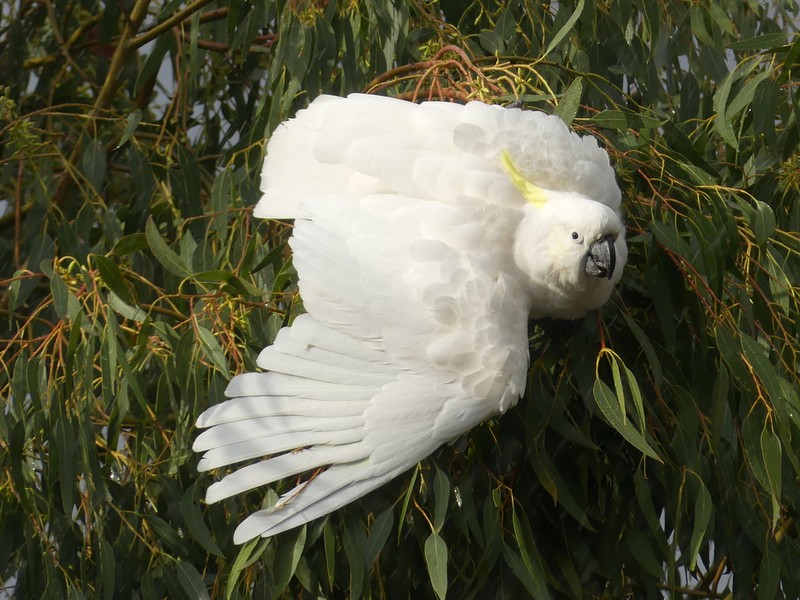
Sulphur-crested Cockatoo bathing in the rain. Photo: Ian Fraser.
We have very recently returned from a few weeks out of Canberra to discover something that you may well have already noticed. The ground around here is littered with a huge quantity of eucalypt leaf sprays, snipped off the trees and dropped.
We know that the culprits were the cockies but it isn’t clear what their motive was.
However, the most convincing suggestion I’ve found is that they were after the still-soft seeds in ripening gum nuts; many eucalypts synchronise their seed drop to overwhelm seed-eaters, especially ants. They hold the twig in one foot (almost always the left), snip it off with that effective beak, chew some soft young gumnuts and drop the rest.
A final thought: next time you’re tempted to think rude things about the assault on your ears that the cockies seem to be forever committing, remember that it could be worse. When they are tending the chicks out of suburban earshot, those babies are perpetually demanding food with virtually never-ending rasping growls that are presumably designed to drive their parents to stick something in their beaks just to shut them up. By the time they come to town for the winter, they’ve pretty much given up wanting to be fed and are now taking care of themselves.
I know, however, that you may not be much comforted by that while your ears are ringing with Sulphur-crested shrieks.
Ian Fraser is a Canberra naturalist, conservationist and author. He has written on all aspects of natural history, advised the ACT Government on biodiversity and published multiple guides to the region’s flora and fauna.
Original Article published by Ian Fraser on Region Canberra.




